Ancient World Questions. Uncover Historical Insights and Biblical Connections
Delve into our curated list of questions about the ancient world, exploring historical insights and their biblical connections. Perfect for history buffs and Bible scholars alike. Discover the answers today!
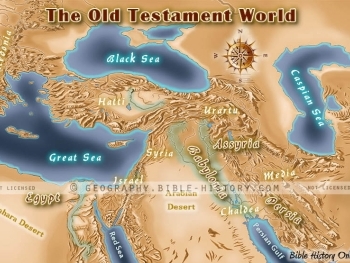
Was the Caspian Sea Mentioned in the Bible?
The Caspian Sea was not mentioned in the Bible. In Old Testament times the Caspian Sea was mainly just a large body of water marking the northeast corner of what we recognize as the world of the Old Testament. One interesting fact is that the Caspian...
What are the Historical Sources for the Second Temple?
There are five primary sources for the study of the Second Temple in Jerusalem, the Temple of Herod. They are: The BibleThe Books of MaccabeesJosephus*The Dead Sea ScrollsThe Mishna** *War book 5, chapter 5; Antiquities book 15 chapter 11**tractates ...
What did the Crown of Thorns Symbolize?
In the Bible, the crown of thorns is mentioned in the account of Jesus' crucifixion. Matthew 27:29, Mark 15:17, and John 19:2 describe how the Roman soldiers twisted thorns into a crown and placed it on Jesus' head as a form of mockery and humiliatio...
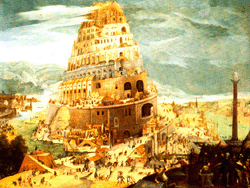
What does the word Babylon mean?
Babylon is Akkadian “babilani” which means “the Gate of God(s)” and it became the capital of the land of Babylonia. The etymology of the name Babel in the Bible means “confused” (Gen 11:9) and throughout the Bible, Babylon was a symbol of...
What is significant about the Dead Sea?
The Dead Sea holds several significant aspects in biblical and historical contexts. Here are some key points: Geological and Natural Features: The Dead Sea is a saltwater lake located at the lowest elevation on Earth. Its high salt concentration make...
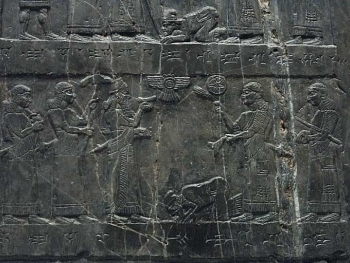
What is the Black Obelisk?
In 1846 an English traveler and artist named Austen Henry Layard was digging around the ruins of ancient Nimrud (known as Calah) in northern Iraq. He discovered something amazing, a black limestone obelisk now referred to as “The Black Obelisk of S...

What is the Bronze Bust of Augustus?
This bust was discovered by archaeologists at Meroe (Modern Sudan) and is currently in the British Museum. It depicts the face of the Roman Emperor Augustus who ordered the census just before the birth of Jesus. This brought the parents of Jesus (Jos...
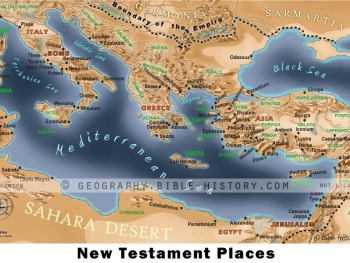
What is the Extent of the New Testament World?
This map reveals the “Nations” within the ancient world during the first century A.D., the time of the New Testament. The New Testament world includes the areas of Israel, Asia, Greece, and Italy. During the life of Jesus his ministry took place ...
What is the Extent of the Old Testament World?
Geographically, the Old Testament “world” extended from the Nile river in the south west, to eastern Greece in the north west, to the Caspian Sea on the north east to the mountains just east of the Persian Gulf on the south east. The entire area ...

What is the Meaning of Jerusalem?
The etymology of the name Jerusalem is not certain; it is apparently of Semitic origin. An Egyptian notice from the third quarter of the nineteenth century B.C. mentions Urusalimum. The Assyrians called it Ursalimmu. Modern scholars take these names ...
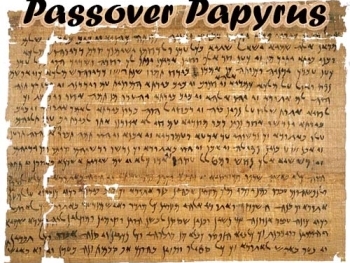
What is the Passover Papyrus?
The Passover Papyrus is a letter from among the elephantine papyri that dates back to the time of Darius II, in 419 BC. In 1907 archaeologists discovered in Aswan papyrus fragments of a letter that bears the royal authority of the Persian Empire (not...
What is the Western Wall?
The Western Wall, also known as the Wailing Wall or Kotel, is a significant religious site in Jerusalem, Israel. It is a section of the retaining wall that once surrounded the Second Temple's courtyard and is revered as the most sacred site for Jewis...
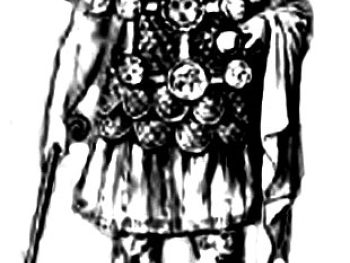
What was a Roman Centurion?
In ancient Rome the “centurion” meant “captain of 100”, and the Roman centurion was captain over 100 foot soldiers in a legion. The centurion was loyal and courageous, beginning as a soldier in the army and working their way up the ranks. The...
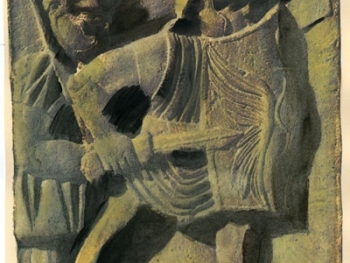
What was a Roman Legion?
Augustus, the first emperor of Rome had in his empire 25 legions of approximately 6,000 soldiers each. A legion was formed of 10 Cohorts (540 men in each Cohort). Each Cohort was subdivided into 6 Centuries (90 men formed a Century), and each legion ...
What was the Persian Gulf in the Bible?
The Persian Gulf marked the southeast corner of the world of the Old Testament, with the Caspian Sea marking the northeast corner. Many rivers flow into the Persian Gulf including the famous Tigris and Euphrates rivers. In Old Testament times the nor...
What was the Wilderness of Judea?
The Wilderness of Judea, mentioned in the Bible, refers to a geographical region located east of Jerusalem and extending toward the Dead Sea. It is characterized by its rugged terrain, barren landscapes, and limited vegetation, making it a challengin...
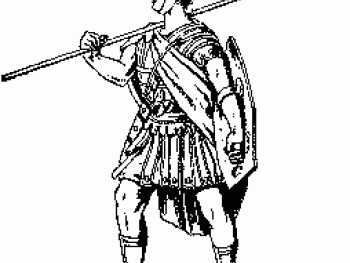
What Weapons did the Roman Soldier Carry?
The weapons of a Roman solder included: the gladius (the short, straight, two-edged sword with which he would thrust rather than slash), and this he carried on a belt either from the shoulder or round the waist. He also carried the javelin “pilum�...
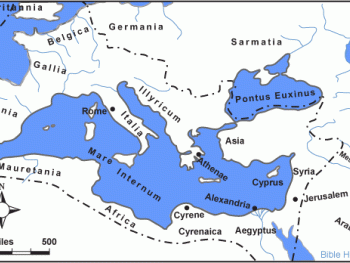
What were the Boundaries of the Roman Empire?
During the time of Augustus the boundaries of the Roman empire were the Atlantic on the west, the Euphrates on the east, the deserts of Africa, the cataracts of the Nile and the Arabian deserts on the south, the British Channel, the Rhine, the Danube...
About
Welcome to Free Bible: Unearthing the Past, Illuminating the Present! Step into a world where ancient history and biblical narratives intertwine, inviting you to explore the rich tapestry of human civilization.
Discover the captivating stories of forgotten empires, delve into the customs and cultures of our ancestors, and witness the remarkable findings unearthed by dedicated archaeologists.
Immerse yourself in a treasure trove of knowledge, where the past comes alive and illuminates our understanding of the present.
Join us on this extraordinary journey through time, where curiosity is rewarded and ancient mysteries await your exploration.
Recent posts
-
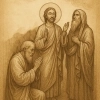
Prayers for Prophets: A Reflection on Reverence and Intercession
Prophets hold a revered status across many of the world’s major religions. As individuals chosen to convey divine messages, they are often remembered with deep respect, veneration, and love. One of the most profound ways believers express their connection to prophets is through prayers—supplications made for, to honor, or inspired... -

The Bible in Museums: Where to See Ancient Scripture Today
The Bible, as one of the most influential books in human history, has shaped not only religious beliefs but also the course of civilization. Its stories, teachings, and moral lessons have impacted art, literature, law, and culture for centuries. Today, while many people engage with the Bible through modern translations... -

Archaeologists Uncover Possible Oldest 3D Map, Dating Back 13,000 Years
A team of archaeologists has identified what may be the world’s oldest known three-dimensional map, according to a new study. The discovery was made at Ségognole 3, a prehistoric sandstone rock shelter located south of Paris, France. While the site has been known since the 1980s for its ancient engravings—including depictions... -

Archaeologists Discover 3,500-Year-Old Tomb of ‘Missing Pharaoh’ in Egypt
Burial Site of Thutmose II Hailed as the Most Significant Find Since Tutankhamun British archaeologist Piers Litherland had spent over a decade exploring the remote western wadis near Egypt’s Valley of the Kings when he made a breathtaking discovery—an ancient staircase leading to a long-lost royal tomb. What he and his... -

Ancient Jewish Ritual Bath Unearthed Near Rome Sheds Light on Jewish Life in the Roman Empire
Archaeologists in Italy have uncovered the remains of an ancient Jewish ritual bath, or mikveh, near Rome, marking the oldest known discovery of its kind outside the biblical regions of Israel and its surroundings. The mikveh was found during an ongoing excavation in Ostia Antica, an ancient port city located 16...
Main Menu
- Ancient Assyrian Social Structure
- Ancient Babylonia
- Ancient Canaan During the Time of Joshua
- Ancient History Timeline
- Ancient Oil Lamps
- Antonia Fortress
- Archaeology of Ancient Assyria
- Assyria and Bible Prophecy
- Augustus Caesar
- Background Bible Study
- Bible
- Biblical Geography
- Fallen Empires - Archaeological Discoveries and the Bible
- First Century Jerusalem
- Glossary of Latin Words
- Herod Agrippa I
- Herod Antipas
- Herod the Great
- Herod's Temple
- High Priest's in New Testament Times
- Jewish Literature in New Testament Times
- Library collection
- Map of David's Kingdom
- Map of the Divided Kingdom - Israel and Judah
- Map of the Ministry of Jesus
- Matthew Henry Bible Commentary
- Messianic Prophecy
- Nero Caesar Emperor
- Online Bible Maps
- Paul's First Missionary Journey
- Paul's Second Missionary Journey
- Paul's Third Missionary Journey
- Pontius Pilate
- Questions About the Ancient World
- Tabernacle of Ancient Israel
- Tax Collectors in New Testament Times
- The Babylonian Captivity
- The Black Obelisk of Shalmaneser
- The Books of the New Testament
- The Court of the Gentiles
- The Court of the Women in the Temple
- The Destruction of Israel
- The Fall of Judah with Map
- The History Of Rome
- The Incredible Bible
- The Jewish Calendar in Ancient Hebrew History
- The Life of Jesus in Chronological Order
- The Life of Jesus in Harmony
- The Names of God
- The New Testament
- The Old Testament
- The Passion of the Christ
- The Pharisees
- The Sacred Year of Israel in New Testament Times
- The Samaritans
- The Scribes
Ancient Questions
- What was a Watchtower?
- Who was the Roman Emperor when Jesus was Born?
- Was the Adriatic Sea a Place of Sudden Storms?
- What was the Persian Gulf in the Bible?
- How did Topography influence the people of Ancient Greece?
- What was the role of slavery in ancient societies like Rome and Greece?
- How many were in Jerusalem for the Passover of Jesus?
- Why Did the Goddess Diana have so many Breasts?
- Was the Colosseum Around During the Time of Jesus?
- What were the Classes of Citizenship in Ancient Rome?
Bible Study Questions
- What are the key teachings of Jesus regarding love and compassion?
- The Revised Geneva Translation (RGT): Specific Aspects, Comparison to the King James Version, Impact on Bible Memorization, and Theological Distinctives
- A Detailed Historical Analysis of the American Standard Version (ASV): Comparison to the King James Version, Influence on Later Translations, and Evaluation of Strengths and Weaknesses
- How can we apply biblical principles to our daily lives?
- What is the Bible?
- What are the different approaches to studying and interpreting the Bible?
- The 400-Year Prophecy: Unpacking Genesis 15 and the Journey of a People
- Exploring the Douay-Rheims Bible (DRA): Historical Aspects, Comparisons, and Influence
- What does the Bible teach about forgiveness?
- An In-Depth Examination of the New American Standard Bible (NASB): Key Aspects, Comparisons with Other Literal Translations, Impact on Bible Study, and Differences Between Editions